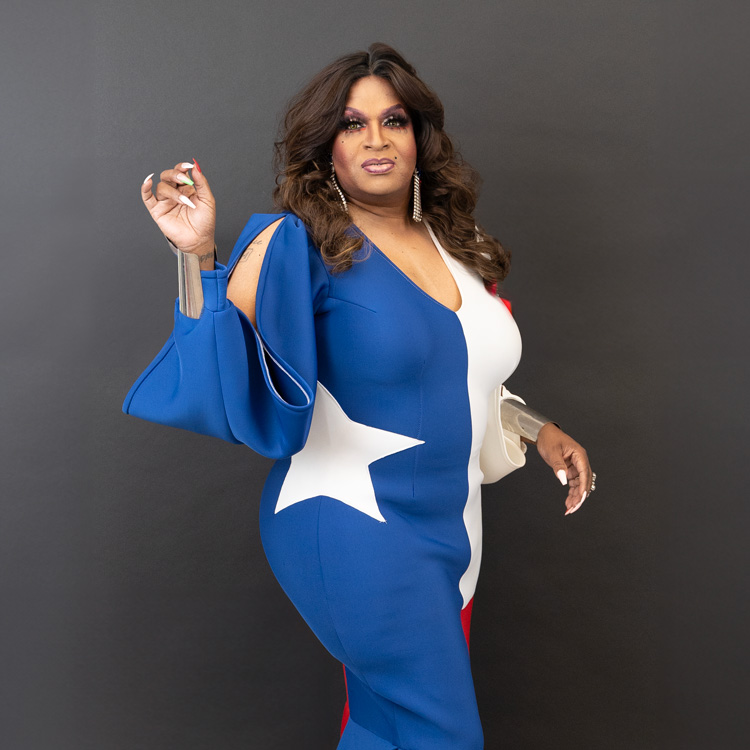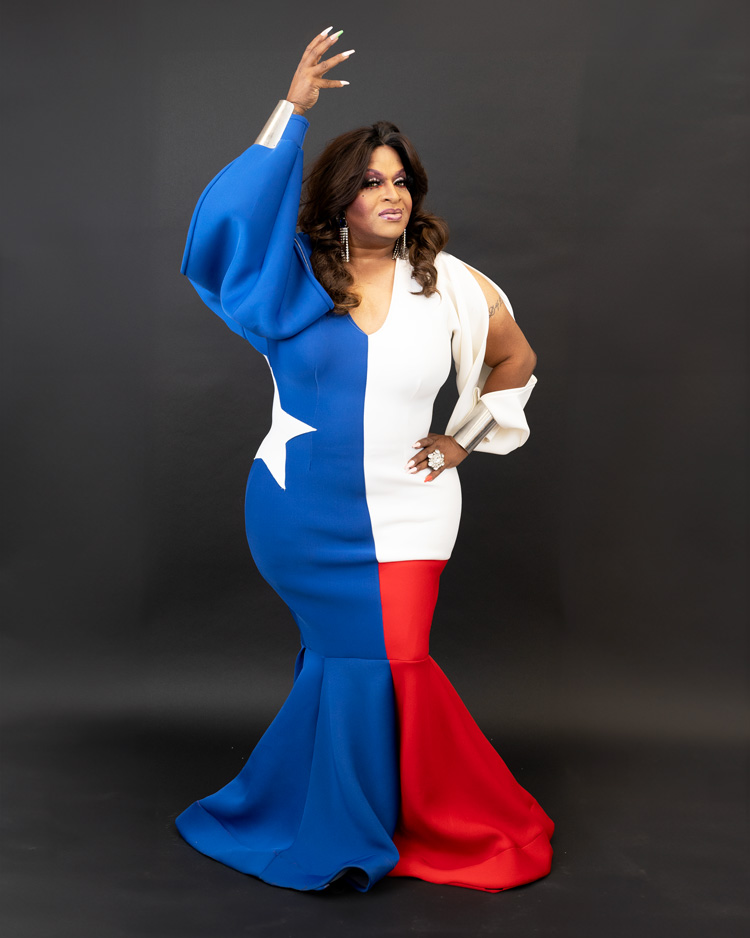The Freedom to Define Your Identity
Flawless Oz’s journey to self-acceptance started with embracing the term ‘nonbinary.’

Flawless Oz has been in the business of doing drag for the last 27 years, but is just now finding the language to fully identify their self. When they arrived on the scene at 21, they felt an overwhelming pull to become a drag entertainer. So just one year after attending their first drag show, they had created the persona that would become Flawless Oz.
Years before Flawless was created, Jonathan Barnett—their birth name—had started a budding record label. After struggling to get the business off the ground, they went to work in retail management. Helping popular drag performers find clothes at the time sparked conversations that enticed Flawless to visit a gay club for the first time.
“I walked into the club, saw Chanel Nicole and Tiffany Brooks onstage, and said, ‘I want to do that.’ People were tipping performers who were not celebrities to lip-synch over a song. I thought [if they can do this and] in six or seven minutes make a couple hundred dollars, I can do this, too!”
Drag was a new world that allowed Flawless to explore a new part of who they were. Still, they found themself unsure of their sexuality years before as a young boy. Self-characterized as an effeminate man their entire life, they were primarily attracted to masculine-presenting women. Though often bullied for being what appeared to be gay, they didn’t have any specific attraction to the same sex over the opposite sex. But there was always that binary idea that because they liked softer things, they must be a gay man. And when their pseudonym Flawless presented itself, they were almost sure it had to be true.
“I would ask myself, ‘What straight man wants to wear women’s clothing?’ From the moment I saw my mother’s heels and dresses, I was drawn to them. Could I be straight and like to wear those things?”
They had their first child in 1998, two years into their drag career. That hugely momentous occasion managed to spark a lot of inner conflict.
“There was only gay and lesbian back then. There didn’t seem to be a belief in bisexuality, and transgender wasn’t even a term used by the community. I wasn’t a girl, anyway. I only wanted to wear girl clothes.”
So after their relationship ended with the child’s mother, Flawless started to date men. This lasted for a couple of years before they found themselves back with women. Over time, they ended up having a total of four children.
After struggling with their self-understanding, Flawless eventually gravitated to an attraction to the opposite sex as a drag queen. Though freeing, it left them at odds with the LGBTQ+ community that they had taken refuge in. Without the language to explain their sexuality—and, at this point, realizing that their identity was neither gay nor straight—they felt alone in a community full of people becoming increasingly proud to be who they were.
All of that changed when Flawless found the term nonbinary. “If I would have known that sexuality and identity were different, that would’ve given me much more comfort,” they admit.

But more important than understanding the difference between “sexual attraction” and “sexual identity” is understanding the full spectrum of gender identity and its purpose in defining a group of people searching for clarity. UCLA’s Williams Institute reports that over 1.2 million people in the US identify as nonbinary. But that term is still not fully understood because it has only been around for two decades.
Definitions are important—not just to expand the LGBTQ+ acronym, but to become conductors of a greater freedom of expression. After 22 years, Flawless found a term that explains this dichotomy of being enchanted by performing in drag and living day-to-day as Jonathan. Using both personalities throughout their life was the catalyst to an awakened journey of self-expression. Ridiculed for being an effeminate man for decades while mostly dating women, identifying as a nonbinary person allowed things to finally make sense.
“The woman that was inside of me channeled the feminine energy even when I was in masculine situations, and I finally had a definition for it,” Flawless says.
Nonbinary people don’t identify as either male or female, and they usually find themselves expressing parts of both genders. The distinction is that some nonbinary people identify as gay, lesbian, bisexual, queer—and even straight. Nonbinary is an attribute of gender identity, and is separate from how people identify their sexuality and attractions.
“For a long time, I didn’t understand where I existed. Yes, I can change a tire, but I like all things feminine. The term ‘nonbinary’ let me understand who I was, and separate it from who I liked.” —Flawless Oz
“For a long time, I didn’t understand where I existed. For all intents and purposes, I had a mostly heterosexual existence. Imagine living in a situation where I don’t exist as a straight male. Yes, I can change a tire, but I like all things feminine. [The term nonbinary] let me understand who I was, and separate it from who I liked.”
Though the term is new, nonbinary people have existed for millennia. From ancient Mesopotamia to India, and closer to home in Native American cultures, “third-gender,” “two-spirited,” and other nonbinary identities have been documented. More recently, we have seen stars such as Janelle Monae, Sam Smith, Alex Newell, and Shea Coulee identify with this term. Finding the ability to properly identify oneself is just as important as finding human connection. After all, fully knowing oneself is essential for fully connecting with other people.
For people like Flawless, that awareness has meant more than you could imagine. “Finding this definition made me more comfortable in the community setting. I often felt ostracized by both sides of the community as rumors and innuendo came back to me over time [regarding my sexuality], because people assume they know you. Gaining the information about the definition of nonbinary gave me the language to not only tell them the truth, but also to find the words to be fully authentic for myself.”
On July 14, the community celebrates International Non-Binary People’s Day, designed to raise awareness and visibility of nonbinary people. This date (which was first observed in 2012) is significant, as it is the midpoint between International Women’s Day and International Men’s Day on the calendar. And with the nonbinary community’s legacy of seeking freedom and liberation, there is some serendipity in July 14 being just ten days after we celebrate our nation’s freedom on Independence Day.
Through it all, Flawless stands stronger and more connected than ever to an LGBTQ+ community that is growing in its understanding of their queer identities. “You no longer get to exclude me from my community,” Flawless concludes. “This is my community, too!”
Follow @Jonathan Demond Barnett (Flawless Oz) on Facebook, and @flawlessoz
on Instagram.











FB Comments